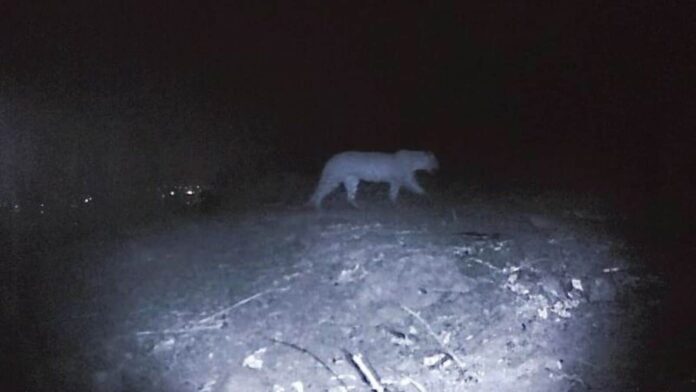At first glance, I thought it was a bandicoot, but something about the shape of its body and the way it ran across the grass gave me pause. Unlike rats that hug the wall when they run, this creature was boldly running across the lawn, its bushy tail firmly parallel to the grass. In a flash, it occurred to me that my unexpected guest was a grey mongoose.
I live in the heart of Bangalore city, a stone’s throw away from its central business district. All around me, stretching for miles in every direction, is the built-up concrete jungle of this fast-growing metropolis. That a wild animal, the likes of which I had only seen before in the rainforests of South India, was scampering down my lawn, beggared belief.
The next day, I had my son join me. Like me, he too is an avid wildlife photographer and I wanted confirmation that I wasn’t dreaming. At 10 o’clock, we both saw the creature raise his head over the wall and slither down, following the same path he’d taken the previous day.
We both agreed that this was indeed a rare sighting of urban wildlife, a mongoose living in the heart of the city. It had probably been flushed out of its burrow by excessive rain.
We made plans to set up a camera trap to photograph our furry friend knowing that, without pictures to prove it, no one would believe there was a wild animal running free in the city.
And then, later in the day, I saw news reports that quoted the chief wildlife warden of Tamil Nadu as saying that the use of camera traps without authorization was prohibited—even if set up on private property.
What’s more, the wildlife department was planning to issue notices to all private estates in the Nilgiris that were engaging in this practice. While the immediate objection of the forest department was to a scene in a wildlife documentary that showed a leopard and her cubs at such close range that it must have involved camera traps, the intention was clearly to cast the net more widely.
For those who don’t know how it works, a camera trap is just a regular camera that has been modified so that recording is triggered by a photo-electric sensor. This makes it possible to automatically start shooting when an animal comes within range of its wide-angled lens.
As a result, filmmakers can capture footage of wild animals that simply would not show themselves if they even sensed the presence of a human being.
It is an utterly non-invasive and ecologically friendly way in which to record the movement of highly elusive species of wildlife without causing any disturbance to their daily lives. Such devices are widely used by conservationists around the world.
No one other than the forest department is allowed to set up cameras like this within a reserved forest without prior authorization. This is understandable. After all, nobody is allowed to even step out of their vehicles in these forests, so I can see why setting up a camera and a photo-sensitive trigger would need special permission.
However, I cannot understand how this restriction can extend to what I do at home. There is no law that prevents me from using a camera in my house, whether I operate it manually or have it triggered by a sensor.
If that were indeed the case, every motion-sensitive camera installed in homes and apartment complexes around the country would have required prior permission. What are these security devices if not cameras that record video footage when they are triggered by the movement of human beings?
How different can that be from a camera trap that is triggered by the movement of an animal? If camera traps are illegal, then so too are close-circuit television (CCTV) cameras, and I know of no law that says this is the case.
What is even more bizarre is why the wildlife department would want to crack down on camera traps in the first place. It is well known that human-animal conflict is a serious and growing concern.
The more we encroach upon the spaces that wild animals inhabit, the greater is the chance that humans in those borderlands will come in contact with them—often in aggressive circumstances.
No forest department, no matter how well-funded, can hope to monitor the movement of all wildlife in the buffer zones that border our forests, where these incidents are most common.
That being the case, I would have thought they would welcome any additional information they could get that would prevent the occurrence of such incidents.
Camera traps on private property are a simple way to augment their information on the movement of wild animals outside the territory they patrol. Preventing well-meaning private citizens from performing this public service makes little sense.
As it happens, we didn’t end up capturing any pictures of the grey mongoose. After over a week of incessant rain, the sun came out and dried the once-flooded streets of the city.
Over the next two days, we kept checking to see if our furry friend would show up again—but it never did. I can only imagine that the rains having stopped, water had drained out of the burrows that this wild animal was accustomed to roaming around in, and it had happily returned to its normal life below the city streets.
#wildlife #authorities #object #camera #traps #private #property
